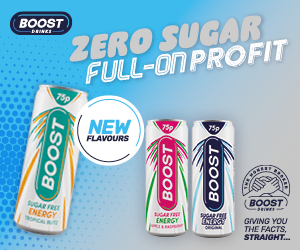In the second Convenience Conversation of 2018, Scottish Grocer invited a select group of retailers, suppliers, wholesalers and EPOS firms to Glasgow for a discussion on the latest developments in convenience and how to stay on top in a changing environment

[box style=”0″]
THE SG Convenience Conversations programme puts together experts from companies and leading Scottish independent retailers to discuss important issues. It’s an extension of the Scottish Grocer Awards and part of Scottish Grocer magazine’s work to build communication and best practice in the convenience retailing industry across all of Scotland.
[/box]
FOR the second Convenience Conversation of 2018, leading retailers, suppliers, wholesalers and technology providers joined together to discuss the latest developments in convenience – and how retailers can build a business that’s well-equipped to handle them
Representatives from Warburtons, Landmark Wholesale, United Wholesale Scotland, the National Federation of SubPostmasters and The Retail Data Partnership were on hand at the Glasgow Hilton to discuss developments and share ideas with retailers Bruce and Donna Morgan of Best-one @ Brownlies of Biggar, Tracy Mcneil of Clydebank Co-op Kilbowie, and Sukhi and Jarnail Sangha of Coylton Convenience Store in Ayrshire.
Chaired by Matthew Lynas of Scottish Grocer, the discussion got underway with an overview of some of the major consumer trends of 2018, following a year of major change for the sector.
James Loker of The Retail Data Partnership (TRDP) kicked things off by providing an overview of convenience sector performance, noting that turnover has dropped 10% on the previous year, with tobacco regulations taking much of the blame for the dip.
“Ever since the tobacco products directive kicked in last year turnover has taken a hit. It’s not as bad as we thought it would be, unit sales have been down 20% but what retailers are trying to do is put their prices up,” he said.
James added that it’s not just cigarettes that have seen turnover decline in c-stores.
“Most categories are down but it’s not just bad news as more retailers are trying to diversify what they’re doing,” he said.
We’ve found more and more retailers are trying to move into payments and loyalty schemes, putting their attention to things that drive footfall. It could hit retailers if things like merchandising are not getting the attention they need.
–James Loker, The Retail Data Partnership
“We’ve found more and more retailers are trying to move into payments, offering things like loyalty schemes, putting their attention to things that drive footfall.
“That’s not great for the suppliers and could hit retailers if things like merchandising are not getting the attention they need.”
TRDP colleague Brian Eagle-Brown agreed that there’s been a shift in focus from many convenience retailers as they seek out new revenue streams.
“A lot of our convenience customers are asking us about things like food to go, coffee, protein.
“These subtrends don’t necessarily appear on some of our total numbers because as a little category they haven’t got anywhere near the size of some of the main categories but they are trends that our retailers are tapping into,” he said.
It’s not all doom and gloom for traditional categories as TRDP team noted that alcohol has been performing well along with confectionery and soft drinks, particularly energy – although the trading landscape for that sub-category could be changing.
• With the conversation turning to energy drinks, Tracy Mcneil, manager of Clydebank Co-operative Kilbowie Keystore and a highly commended Scottish Grocer Awards soft drinks retailer, raised energy drink sales to under 16s as a concern for the future.
Retailer Bruce Morgan of Best-one @ Brownlies in Biggar commented: “We don’t sell to under 16s. There wasn’t many to start with but it’s a decision we made as part of the Healthy Living programme and we thought ‘we’ll just voluntarily say no’ because it was only two or three kids a day.”

While the location of Brownlies made restricting energy sales possible for Bruce and Donna Morgan, it’s a move that Tracy noted would not be commercially viable at her location.
“We’ve got a store right around the corner, if I stop selling them the kids will just go there. My soft drink fridge takes £500 a day there’s no way I can stop selling to kids if they’ll just go right round the corner,” she said. Bruce agreed that for store’s like Tracy’s a national ban would be required.
• Turning to other categories John Farrell, retail operations manager at Landmark Wholesale, weighed in with his assessment of the market.
“We’re finding a big decline in grocery. The growth areas for us have been confectionery and soft drinks so much so that the space we’ve taken back from grocery has been expanded primarily into confectionery, but I think this time next year we might be talking about a confectionery tax,” he said.
While a tax could come in the future, confectionery is definitely a hit at Coylton Convenience Store, with sharing bags continuing to grow, as retailer Sukhi Sangha noted.
Fiona Nisbet, formerly of Mars and now at United Wholesale Scotland (UWS) agreed.
“I think we all know the standard pack of chocolate in any shape or form is dead,” she said.
“Pound is king, if you put a pound price on anything you can sell it basically.”
• It’s not just new pack formats but new products that excite consumers and in that vein Gordon Bond of Warburtons described how the giant of wrapped bread has been innovating within bakery to keep on top of trends.
“It has never been more important to keep ahead of consumer trends. Ten years ago big bread was the main focus for our business but now, over 40% of what we do is in bakery alternatives.
Although United do have a business that is very much cash and carry, the delivery side of things is vastly improving and we now have chilled and frozen lorries as well, so we understand where we are going.
–Fiona Nisbet, United Wholesale (Scotland)
“Health, craft and premiumisation are all key drivers within bakery leading to innovation such as Thins and Bagels, or more recently our Bistro range. In terms of sectors that are pushing us, gluten free is flying just now,” he said.
Bond, alongside Warburtons colleague Alan Thomas, also invited retailers to take advantage of the category management services that suppliers can offer.
“In terms of the category, myself and Alan are both specialists in bakery so any retailer that wants to speak to us we’re quite happy to come in and category plan for the full bakery category.
“We don’t just look at Warburtons products, we use EPOS data and look at what’s selling in a store, what’s selling in the bread area, and we can category strip, we can redo the whole planogram, that’s a service we provide,” he said.
• When it comes to category management, rationalising to reduce waste is crucial in convenience – not the simplest of tasks with so much to choose from.
Retailers noted the volume of NPD coming to market can be close to overwhelming sometimes, and John Farrell suggested that despite the multitude of choices available, less is definitely more in convenience.
“Whenever I go to a store I always look at household. I once saw a store that had 28 different air freshners, 18 different types of bleach and 27 different variations of washing up liquid and then you think about how even at £10 a case the retailer has a lot of money tied up there,” he said.
“I think that most people would agree that when you’ve got too much of a choice people will actually walk away rather than make that decision and that’s the danger when you’ve got NPD. Unless you’re looking at figures constantly and delisting your bottom profit sellers you’re basically just filling your store with non-selling stock and confusing the customer.”

The importance of paying attention to sales data was hammered home by James Loker, who noted that in his experiences at TRDP, there are still retailers who could be making better use of the features their EPOS system can offer.
“There is an attitude element as well. Just having an EPOS system isn’t enough, one of our biggest challenges that we deal with is engagement,” said James.
“Some retailers are putting everything through the till just fine, their numbers look great but they have very little idea of what they are actually selling. We have initiatives that actually push that information out to them and we get a surprising number of retailers that come back to us and say ‘what are these numbers what do they mean?’.”
• Getting those numbers up is the goal for just about anyone in business and one way of achieving this is through link sales. Donna Morgan of Brownlies said she’s recently found success in this regard through her hot beverages range.
“In the last week we’ve put some McVities biscuits next to our teas and coffees and we’ve found an increase, people are picking up a packet that they might not usually,” she said.
It’s not just well positioned biscuits that are pushing up basket spend at Brownlies. Bruce Morgan explained how stepping things up a gear in merchandising terms has led to a welcome lift in off-licence sales.
“In our alcohol area we have digital screens,” said Bruce.
“One is provided by Best-one and just has their monthly promotion running on a loop. The other we do our own specials, our whisky of the month, our gin of the month and our beer of the month.
“We do tasting videos as well that come up occasionally with Richard Patterson, the master blender from Whyte & Mackay, he’s quite a flamboyant person. He describes whisky very well so it’s a focal point. We’ve also got a whisky barrel right in the middle and on top of that is a book and I’ve got a laminated page for every malt whisky I have with basic tasting notes and the prices are there as well.”

• Smart looking screens might be the future of merchandising for c-stores, but what about the more traditional leaflet drop? Retailer Jarnail Sangha noted that while he too has digital screens in his stores, the leaflets most definitely still have a place.
“I’ve noticed that – well at the beginning of the year with the weather – the company in Glasgow that arrange our leaflet drops couldn’t get out for that one period.
“I couldn’t do those drops and I did notice a four to five percent drop in promotional sales. So while a lot of people may say ‘it’s not much, it’s a lot of outlay for doing leaflet drops’, you know what, if you notice that little drop in sales when you can’t do leaflet drops it tells you that if you’re getting leaflets from wholesalers then you should use them and get them out there.”
Sukhi Sangha agreed, highlighting the advantages a leaflet can have over social media even now.
“Not everyone has time for Facebook. One of our stores is in an area where customers aren’t looking at their phones all day,” she said.
“Some people in our area are quite set in their ways and they expect to see those leaflets and they’re quite disappointed if they’re not there. But it’s about getting the time right as well, you’re not wanting the leaflet guys to drop off three or four leaflets in one go which I know a lot of companies are wanting to do.”
• With Facebook continuing to grab headlines for its own alleged data breaches, the conversation turned to the EU’s new GDPR legislation. Coming into force on 25 May, GDPR tightens up the rules governing how businesses handle customer data, as James of TRDP explained for the group.
“It’s a bit of a monster,” said James.
“Retailers have consumer data which is the really dangerous one. We always say understand the data you’ve got, understand who has access to it and secure it. Those are the three things. As long as you understand what you’ve got and understand what you’re doing with it you should be fine.
“I don’t think it will be the retailer who trips up, I think it will probably be the staff.
“If somebody walks into a shop and says my name is whatever can you tell me what’s on my account, theoretically they could be anybody so unless you’ve got staff asking for proof of who they are that would constitute a data breach. In my opinion it’s going to be frontline staff that don’t necessarily understand. That’s why we’re putting infographics out.”
• After a brief coffee break, and some time to digest the implications of GDPR, the conversation resumed with an update from the wholesale representatives at the table.
Fiona Nisbet of UWS acknowledged that just as retailing is changing, so too must wholesalers.
“I think we’ve realised that we’ve got to change, we’ve got to move with the times,” she said.
“Although United do have a business that is very much cash and carry, the delivery side of things is vastly improving and we now have chilled and frozen lorries as well, so we understand where we are going and where things need to be going.
I think there are added benefits, it’s not just about footfall. People feel you belong to the community because you’ve got a Post Office.
– Troy Gardener, NFSP
“We’re also extending our range and changing it, introducing more upmarket whiskies and gins with the correct mixers to go with that. So things are definitely changing and I’m working with my team to reach out to retailers and help them get the most out of their stores.”
Landmark’s John Farrell agreed that wholesale is evolving and he pointed to the encroachment of online behemoths into grocery as a concern for the future.
“I think there is an evolution in this. I think in ten years time you won’t have cash and carries as we know it, it will all be deliveries. And I think those other products that you would normally get at cash and carry are going to be on Amazon or something.
“I think that’s definitely the way ahead. I think it’s only five years before Amazon is in the cash and carry game in some way or another,” he said.
• With competition from digital giants like Amazon only showing signs of increasing in the future, the need for c-stores to generate footfall and build relationships with their community is more pressing than ever.
In this regard, Troy Gardner of the National Federation of SubPostmasters (NFSP) suggested a c-store Post Office could help out.
“My personal view is the Post Office offers a huge opportunity for anybody with a convenience store.
“I think there are added benefits, it’s not just about footfall, it’s belonging to the community. People feel you belong to the community because you’ve got a Post Office. It’s a generally respected position and a respected role,” he said.

Sukhi Sangha, whose Coylton Convenience Store was crowned Post Office Retailer of the Year at this year’s Scottish Grocer Awards knows a thing or two about community outreach through the Post Office.
And while offering the service may have built some good will with her customers, Sukhi did suggest improvements could be made in the support available to retailers.
“I think we could use more training and workshops. When we first joined in 2003 there were three events a year so if there were any updates or any issues you had someone to talk to. Nowadays the helpline will take you half an hour to get through, we don’t really have any managers so there’s no communication there.
“It’s all very well sending out emails and notices but sometimes a bit more is required.”
Acknowledging the concern, NFSP retail consultant for Scotland and Northern Ireland Robert Clack revealed that a new collaboration board comprising the Post Office, retail groups and other stakeholders has recently started working to address these very issues.
“It’s all about understanding how we can work a bit closer and better together so one of the things at the last meeting was this whole aspect of how do we get people involved in training.
“Whilst this is still very early days, the collaboration board was just recently launched, I’m hopeful that through time that will actually be of benefit and some of those things you are talking about will hopefully be resolved,” he said.














